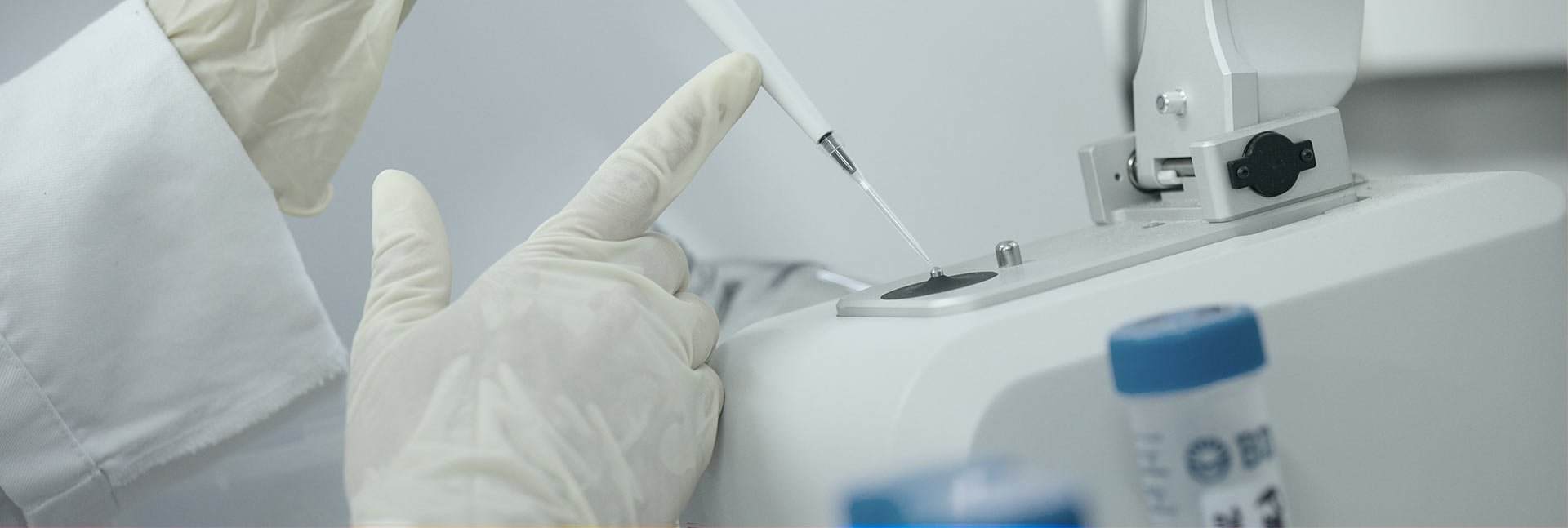Making the right Ab format for every application
Starting from a given antigen, MImAbs can generate, select and optimize antibodies to better suit their intended application.
Starting from different antigen material (cells, recombinant proteins, peptides,mRNA, etc.), MImAbs rapidly generates and automatically screens several tens of thousands of single B cells (up to 11,000 cells by chip) with the Beacon® Optofluidic platform (Bruker Cellular Analysis).
Immunization
- Of mice (BALB/c, C57Bl/6 and KO models) or ATX Gx™ Humanized mice (certified service provider for Alloy Therapeutics ATX-Gx™ models) with repeated injections.
- Monitored via serum titers by ELISA or FACS.
Beacon® steps
- Up to 40,000 plasmocytes (11,000 single B cells per chip) from either spleen or bone marrow seeded into NanoPen™ chambers and screened per Beacon® campaign.
- Rapid functional on-chip screening at single cell level with recombinant antigen or transfectant expressing antigen
- A large choice of selection criteria for Beacon® screening : recognition of antigen, blocking activity, crossreactivity properties.
- Export of the hits of interest, and sequencing
- Hits pre-selection by in sillico sequence analysis and modelling : CDR's liabilities, CDR's patches, etc.
MImAbs has developed a collection of versatile vectors for the production of different formats (Fc competent or Fc silent, cysteine-engineering, antibody fragments, bispecific or multispecific formats). They can be used for cloning antibodies generated at MImAbs during Beacon® campaign or using sequences provided by clients.
Cloning processes have been fully automated using the Tecan EVO200 and FLUENT 780 robots to ensure a rapid high-troughput and error-free process.
Antibody format choice
MImAbs can generate human and mouse antibodies in different standard or customized formats (IgG, Fab, Fab’, Fab’2…). Although other formats can be considered, those that are ready and available in-house include:
Reference | Antibody format | Description | Purpose |
GD | Mouse IgG1 | Heavy chain mutation: D265A | Fc silent, deglycosylated antibody |
GE | Human IgG1 | Heavy chain mutation: E345K | mAb multimerization |
GH | Human hybrid CH1 (IgG2) CH2-CH3 (IgG1) | Heavy chain mutation: C219S | Enhanced mAb internalisation |
M1 | Human IgG1 | Heavy chain mutations: L235V, F243L, R292P, Y300L, P396L | Enhanced ADCC response |
S1 | Human IgG1 | Heavy chain mutation: N297S | Deglycosylated antibody 2 BTG coupling sites |
S2 | Human or mouse IgG1 | Heavy chain mutation: N297Q | Deglycosylated antibody 4 BTG coupling sites |
V1 | Human IgG1 | Heavy chain mutations: E233D, G237D, P238D, H268D, P271G, A330R | Enhanced binding to the Fc-g-RIIB receptor |
Antibody Production
MImAbs produces antibodies from micro-scale (100 µg) up to several hundred of milligrams, depending on their use.
- Micro-scale production and purification at 100 µg level for EC50 determination, in particularly for the Beacon® selected hits (up to 100 hits).
- Milligram-scale production and purification for in vitro / functional assays.
- Larger scale (several hundreds of mg up to gram) production and purification for in vivo pharmacological package or toxicity studies.
Humanization is important to prevent an immune response against rodent antibodies in patients. MImAbs operates by CDR-grafting following three key steps:
Determination of the most appropriate human framework sequence
Human VH and VL immunoglobulin gene sequences are analysed using two in silico tools: IMGT and IGBLAST. Those immunoglobulins that are phylogenetically closest to the parental rodent antibody are used as framework (FR) for the humanized antibody.
CDR definition
The three complementarity-determining regions (CDRs) of the variable domains are determined on the parental antibody following the Kabat1 and IMGT2 nomenclature systems, and are introduced in the human FR sequence.
Backmutations
Additional residues from the rodent mAb are re-introduced into the human framework regions to preserve antibody structure and antigen specificity:
- Residues responsible for CDR anchoring
- Residue from the Vernier zone which are directly under the CDRs and are important for proper CDR conformation3
- Residues involved in the interaction between the heavy and light chains
The output of the humanization process consists of 9 to 16 humanized variants that contain backmutations in the VH and VL chains and can be tested downstream for antigen binding and specificity.
1 Kabat EA et al, NIH Publication 1991
2 Lefranc MP et al, Dev Comp Immunol 2003
3 Foote et Winter, J Mol Biol 1992
